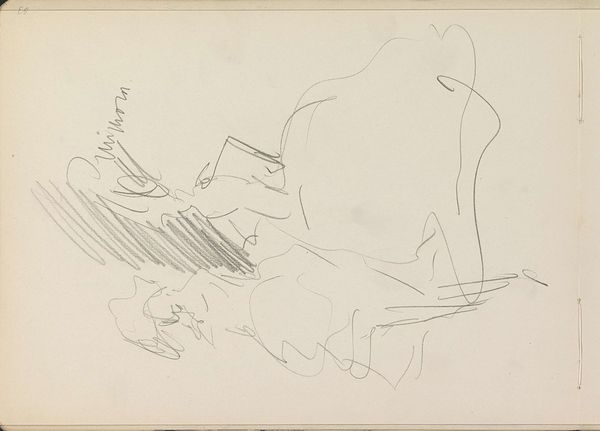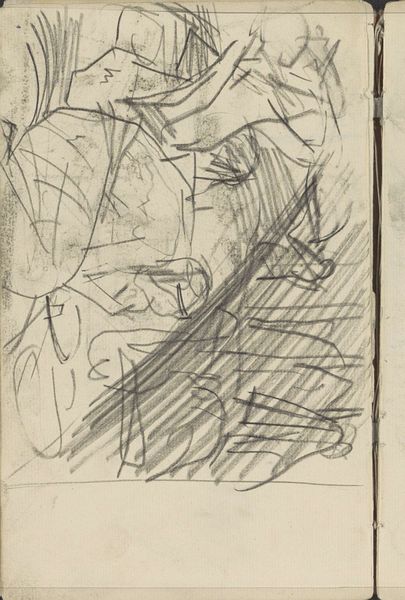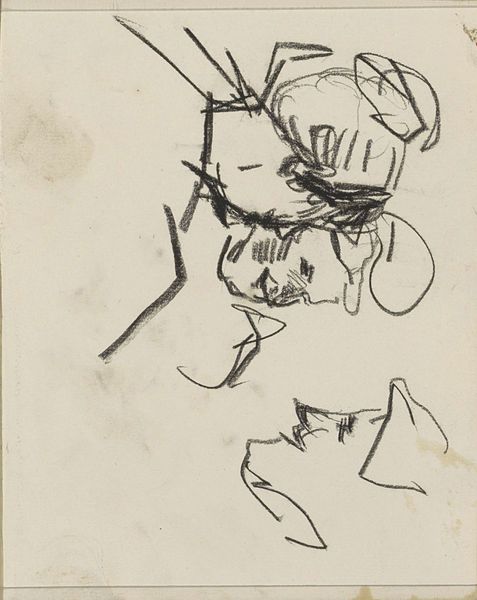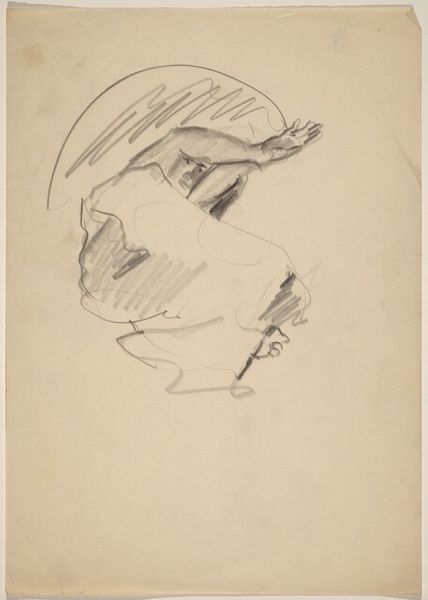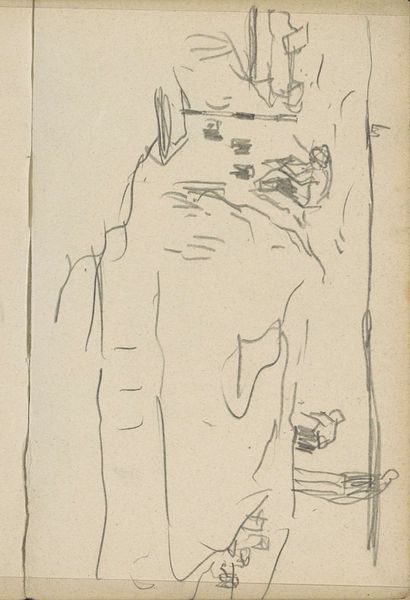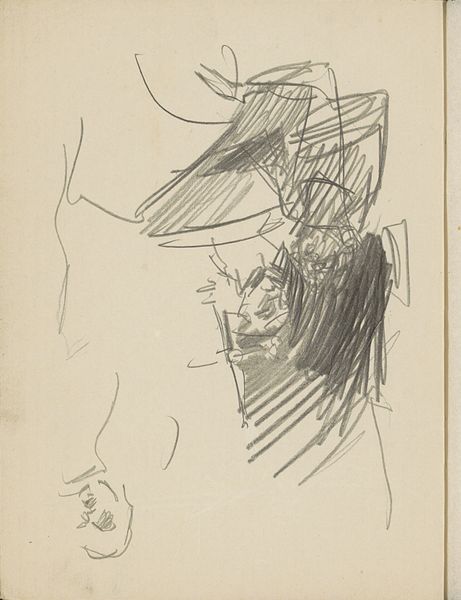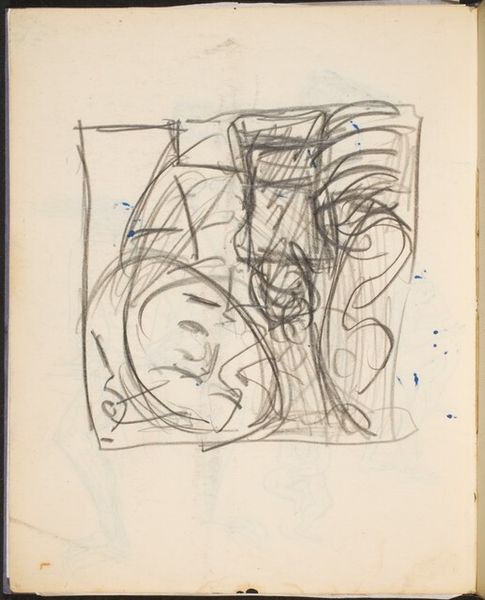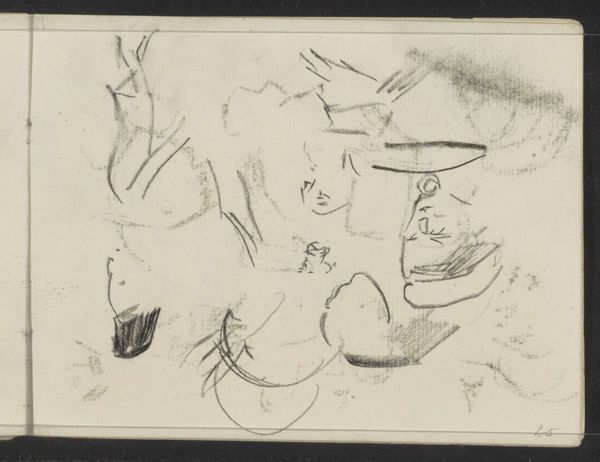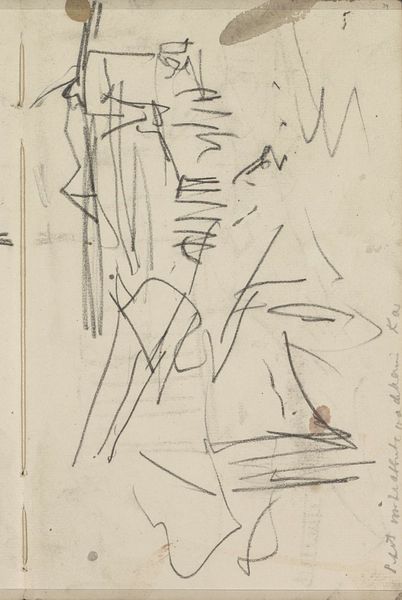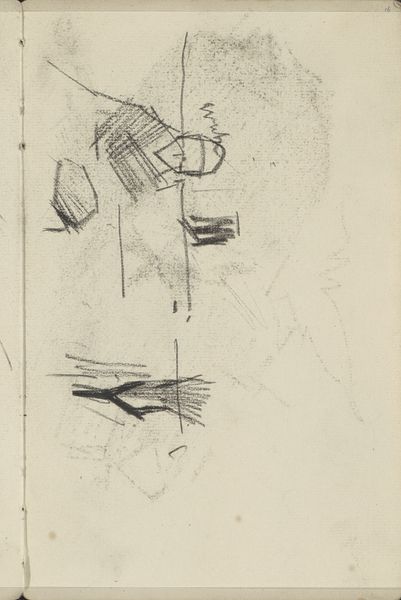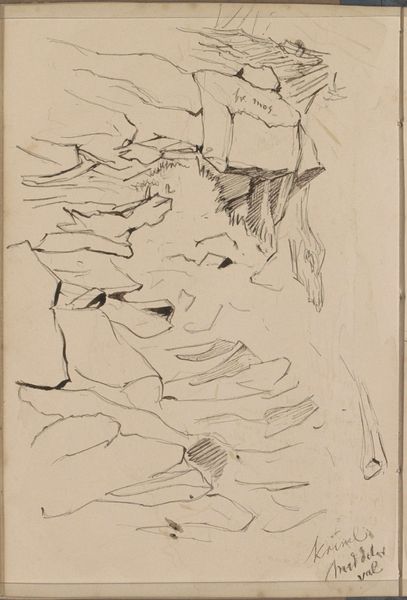
drawing
#
drawing
#
ink drawing
#
pen illustration
#
pen sketch
#
cartoon sketch
#
personal sketchbook
#
ink drawing experimentation
#
pen-ink sketch
#
pen work
#
sketchbook drawing
#
sketchbook art
Dimensions: sheet: 35.24 × 27.94 cm (13 7/8 × 11 in.)
Copyright: National Gallery of Art: CC0 1.0
Curator: Today, we're examining John Marin's 1951 ink drawing, "Movement, Machias River, Maine". Editor: My initial reaction is of dynamic energy—a frenzy of lines capturing a restless spirit. It's almost as if the river itself is vibrating off the page. Curator: Precisely! Marin's skill in abstracting nature is striking. Notice how the energetic penmanship almost disregards representational accuracy in favor of pure gestural expression. He captures the essence, not the detail, of the river. Editor: But what essence is that? Maine, particularly the Machias River, has historically been a site of vital indigenous lifeways and also intense labor exploitation—the timber industry decimating its forests and waterways. Can we see traces of this in the frenzy you speak of? Perhaps the frenetic nature is not just the movement of water but the historical turbulence embedded in this landscape? Curator: An interesting interpretation. However, let us also consider the purely formal elements. The artist's focus on linear structures, angular forms, and the juxtaposition of dark and light creates a sense of depth, pulling the viewer into the compositional field itself. There's a rhythm in these lines—a counterpoint between chaos and control. Editor: But isn't it impossible to separate form from content? This rhythm, this sense of controlled chaos—might it reflect a romanticized vision of the rugged, hardscrabble life associated with this region, glossing over the economic inequalities faced by many of its inhabitants? Curator: You raise important considerations. The work certainly exists within a historical and social context. However, one can still appreciate the intrinsic visual relationships without reducing the work to a singular political reading. The tension he creates with his mark making, considered solely on its own merit, contributes a certain vitality. Editor: Still, a work like this demands that we think critically about the ways in which even seemingly abstract art can perpetuate, even unwittingly, particular narratives about place and labor. Curator: I appreciate your insightful perspective. It underscores the importance of a multifaceted approach to art interpretation, balancing both intrinsic aesthetics and extrinsic realities. Editor: Absolutely. This work reveals to us that seeing isn't just a matter of vision; it is an act of situated, critical understanding.
Comments
No comments
Be the first to comment and join the conversation on the ultimate creative platform.
